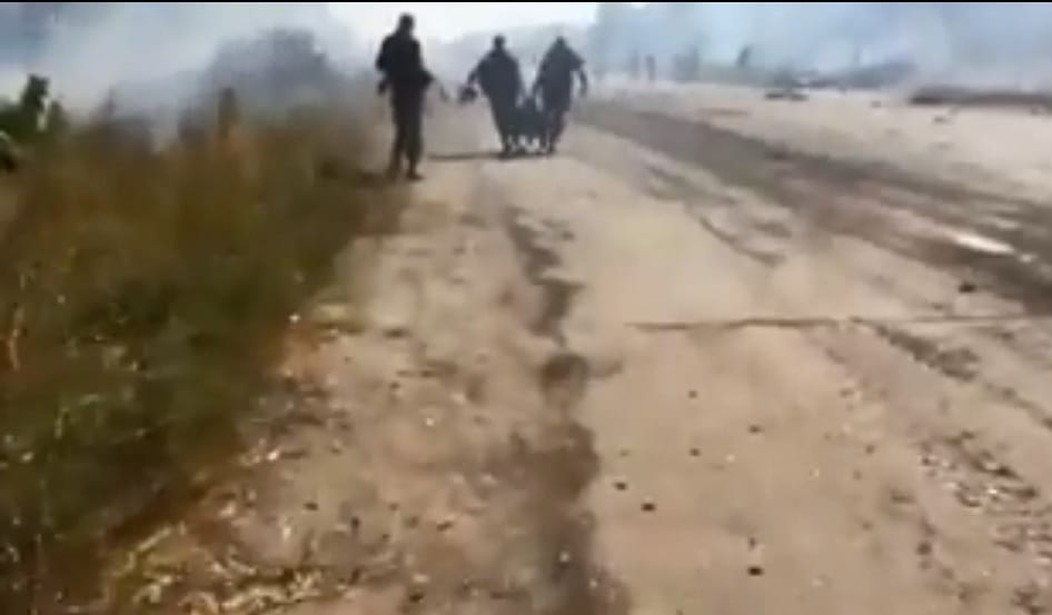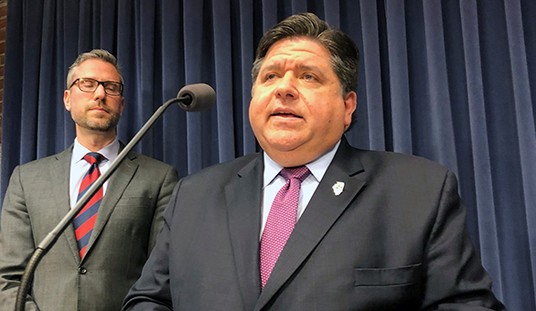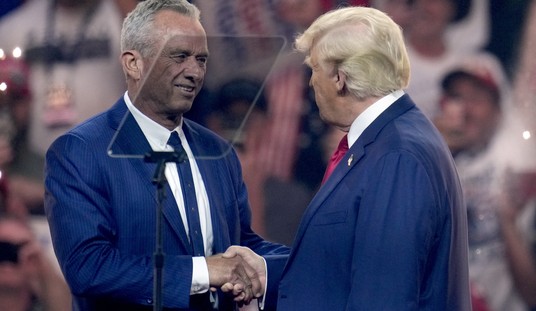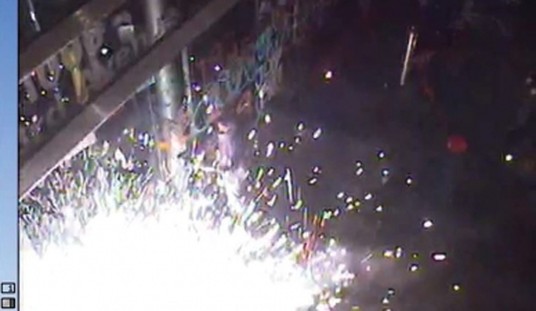
In early February, there was an interesting development in the war in Syria.
Several hundred troops under the command of the Assad regime crossed an easily identifiable “deconfliction” line in eastern Syria to attack U.S. proxy forces. The U.S. combatant command, CENTCOM, was in communications with the Russian command in Syria and warned them that American forces would react if they didn’t call off the attack.
The Russians responded, “have at it,” or words to that effect. U.S. airpower and tube artillery proceeded to thrash the regime forces until finally the Russians called and asked for a ceasefire so that bodies could be recovered. Afterward, it leaked out that the troops shellacked by American firepower were Russian mercenaries employed by Wagner PMC. Wagner has provided off-the-books forces for the Kremlin in Ukraine and is providing them in Syria.
The widespread assumption was that Russia was trying to replicate the “gray zone” strategy they used so successfully in Ukraine.
But there have been unanswered questions throughout this affair. To date, video of the engagement has been limited to two short clips. As CENTCOM didn’t deny it had killed a crapload of Russians I was sort of surprised that more video didn’t leak.
About a week ago, a real puzzlement took place. Somehow Voice of America came into possession of audio feed of an unidentified Russian describing in graphic detail what happened:
On February 11, Polygraph.info acquired three separate audio recordings from a source close to Kremlin, who claimed the people speaking on the recordings are personnel from “CHVK Wagner,” and the audio-clips are recorded phone conversations. CHVK is the Russian abbreviation for “Private Military Company.”
The man on the longest audio clip, speaking Russian with a Moscow accent, detailed what he said was “our failed attack” against a U.S.-held oil refinery in Deir el-Zour on the night of February 7-8.
This raised a lot of questions. Like, for instance, the provenance of the audio. The identity of the speaker and the context in which it is taking place. Obviously it is not surreptitiously recorded, in fact, the quality is pretty good. And why would the Kremlin, which has been pathological in its desire to hide Russian casualties, want this recording released?
Today, the whole story gets a lot murkier. The German paper Der Spiegel carried out an investigation:
Intially, the United States military announced on Feb. 8 it had attacked “pro-regime forces” of Bashar Assad’s southeast of the city Deir ez-Zor to ward off an attack on a base belonging to the Kurdish-led Syrian Democratic Forces (SDF), who are allies of the Americans. The U.S. said the pro-Assad forces had attacked the SDF base with tanks and mortars. The U.S. fired back in response, claiming to have killed “more than 100” of the fighters in what was described as an act of self-defense.
(The following video scenes from the site after the U.S. airstrike on Deir ez-Zor)
But who exactly were these attackers? And what really happened that night in the small, half-deserted villages on the east bank of the Euphrates River? Did American bombs decimate Russian troops? Could the attack even be a foreboding of coming skirmishes between the Americans and Russians?
Based on a lot of interviews this is what they say happened:
At 5 a.m. on Feb. 7, around 250 fighters south of Deir ez-Zor attempted to cross from the west bank of the Euphrates to the east using a military pontoon bridge. They included members of the militias of two tribes, the Bekara and the Albo Hamad, who are fighting for Assad’s regime with Iranian backing, soldiers of the 4th Division as well as Afghan and Iraqi fighters with the Fatimiyoun and Zainabiyoun brigades, which are under Iranian command. A soldier with the 4th Division recounted that the units had spent a week gathering on the property of the military airport. Witnesses say that no Russian mercenaries took part in the attempted crossing.
The Americans and the Russians agreed last year to make the Euphrates River a “deconfliction” line. Assad’s troops and its allies are west of the river while the east side is controlled by SDF under the protection of the Americans. The east side is home to a chain of productive natural gas fields generally known as the Conoco field.
As such, the Americans on the eastern banks viewed the advance as an attack and fired a series of warning shots toward to bridge. Nobody was injured and the attackers withdrew.
But then things changed.
But they didn’t give up. Long after darkness, around twice as many men from the same groups crossed another makeshift bridge a few kilometers north, close to the Deir ez-Zor military airport. They drove without their lights on to prevent U.S. drones from spotting them. Undetected this time, they made it to the village of Marrat on the eastern side. When they advanced further south at around 10 p.m., toward the SDF base in Khusham, the Americans, whose special forces were also stationed there, once again opened fire. And this time they weren’t warning shots. The U.S. said in a statement given to CNN that after “20 to 30 artillery and tank rounds landed within 500 meters” of the SDF headquarters, the coalition forces “targeted the aggressors with a combination of air and artillery strikes.”
That was putting it mildly. Because right around the same time late that night, another group of Syrian tribal militia members and Shiite fighters came from the village of Tabiya to the south and also attacked the SDF base. And the Americans struck back with their entire destructive arsenal. They deployed rocket-equipped drones, combat helicopters, heavy AC 130 aircraft, nicknamed “gun boats,” to fire on targets on the ground, rockets and ground artillery.
They struck in the night, followed by an attack the next morning on a group with a tribal militia in Tabiya that had only come to retrieve the bodies. And on Feb. 9, they once again attacked a unit of the same fighters who had popped up on the eastern side of the river.
There were Russian mercenaries advising these fighters but the number was less than twenty and it seems like most of them ended up dead. The number of Russians Der Spiegel comes up with dovetails very neatly with the crowdsourced number of dead tallied by Conflict Intelligence Team by monitoring social media in Russia.
This all makes sense so far. But then it gets weird.
At the same time, however, a completely different version of events has gained traction — disseminated at first by Russian nationalists like Igor “Strelkov” Girkin, and then by others associated with the Wagner unit. According to those accounts, many more Russians had been killed in the battle — 100, 200, 300 or as many as 600. An entire unit, it was said, had been wiped out and the Kremlin wanted to cover it up. Recordings of alleged fighters even popped up apparently confirming these horrendous losses.
It was a version that sounded so plausible that even Western news agencies like Reuters and Bloomberg picked it up. The fact that the government in Moscow at first didn’t want to confirm any deaths and then spoke of five “Russian citizens” killed and later, nebulously, of “dozens of injured,” some of whom had died, only seemed to make the version of events seem more credible. It has generally been the case, after all, that when something in the Syrian war is denied by the Kremlin, or when the Russians admit to it bit by bit, then it is probably accurate. Besides, Russian losses in Syria are constantly played down.
Girkin is well-known to anyone who has followed the war in Ukraine. He led Russian “volunteers” there and he is currently positioned as an opponent of Putin…to the right.
I don’t have any doubt about the Der Spiegel story. As they say:
Ahmad Ramadan, the journalist who founded the Euphrates Post and has since emigrated to Turkey, comes from Tabiya. One of his contacts fights for the al-Baqir militia and took the video at the site of the bombings. “If it had been a Russian attack, with many Russian dead, we would have reported about it,” he said. “But it wasn’t. The Russians in Tabiya just had the bad luck of being in the wrong place at the wrong time.”
And this is where the story leaves me cold.
I understand why CENTCOM didn’t try to debunk the Russian mercenary story. There is really no interest in stomping on what looks like a pretty good thing. By the same token they haven’t played it up which, as I said in the beginning, I found strange.
What seems obvious is that there is some kind of internal Kremlin power play afoot here that we don’t understand. It is not in Putin’s interests to put into circulation rumors of one, two, or three hundred dead Russians particularly if they became dead at the hands of American firepower.
The audio tapes ensure that the story will spread in Russia. Likewise, you have to wonder who has the huevos to pull this stunt if Putin doesn’t approve? Or is Putin not as secure in his position as we assume? Every strongman looks invincible right up to the moment when he doesn’t.













Join the conversation as a VIP Member